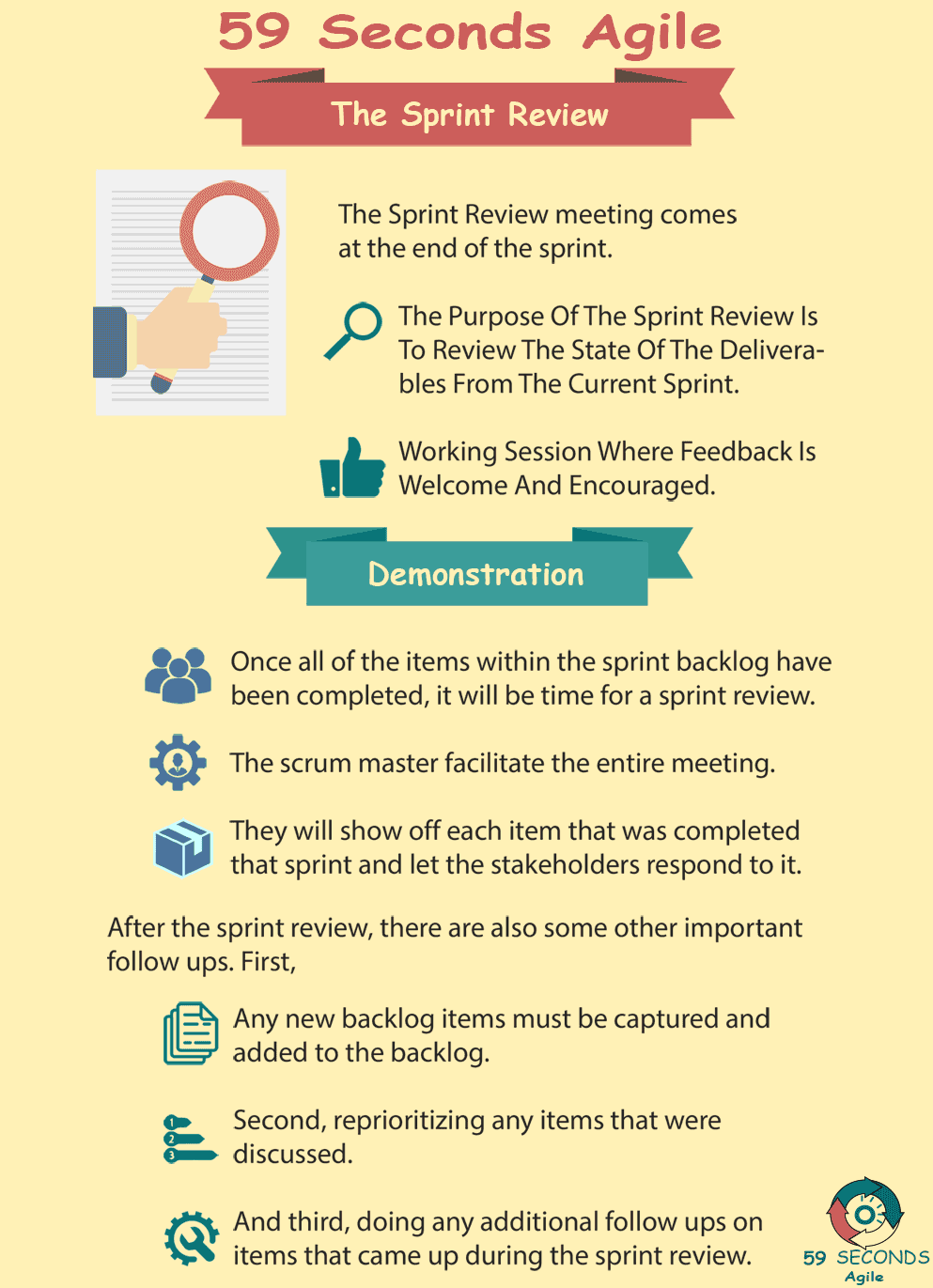This article looks to discuss the Agile Sprint Retrospective and the Sprint Review. The processes involved in these ceremonies will be discussed along with the advantages and disadvantages of the meetings.
Agile Sprint Review and Retrospective
A 59 Seconds Agile Training Video
Continue to Part 4 Below
Agile Sprint Review and Agile Sprint Retrospective
A 59 Seconds Agile Article
This article provides an ‘Introduction the Agile Sprint Review and Retrospective’ and looks to discuss what is involved within these meetings. It provides an insight into is the point of the Agile ceremonies and what is involved in them.
Review and Agile Sprint Retrospective
What about improvements to the overall development processes? The sprint retrospective happens at the end of each sprint. The whole scrum team comes together, including the development team, the scrum master, and the product owner, to discuss how to improve future sprints, and product delivery.
You might be thinking that this sounds like the lessons learned meetings you have in your current traditional projects, but the difference is that the retrospectives are held throughout the course of the product development, and deliver instantly applicable improvements to the development process.
This sounds like a big undertaking, but the retrospective is structured to help the team reflect productively on four specific areas: people, relationships, processes, and tools.
Let’s look at each of these sections and see where you might discover potential improvements. Retrospectives are meant to increase transparency and trust within a team, so team members should feel that they can share their truthful experiences, as long as their focus is productive.
Continue Reading —> Next
Sprint Review Meeting
A 59 Seconds Agile Video Animation
Continue Reading —> Next
User Stories Applied
A 59 Seconds Agile Book Review
User Stories Applied by Mike Cohn is one of our favourite books on Agile User Stories. The book starts with an overview into user stories, and details what a user story is and the different aspects of them. He then discusses how to go about writing a user story, and provides details of the INVEST criteria that can be used to determine if the story is meeting all of its objectives. Next Mike gives an in depth discussion of who user stories are written for and where to begin when gathering the details for them. The book then discusses acceptance testing user stories, including how to go about specifying these criteria and the responsibilities of the development team and customers during this process.
Continue Reading —> Next
Agile Sprint Review and Retrospective
A 59 Seconds Agile Infographic

Continue Reading —> Next
Agile Scrum Master Training Course
Our Favourite Agile Books
We found these books great for finding out more information on Agile Scrum:
Continue Reading —> Next


